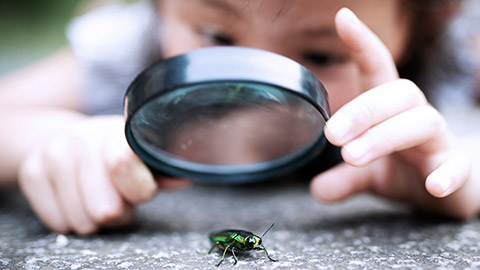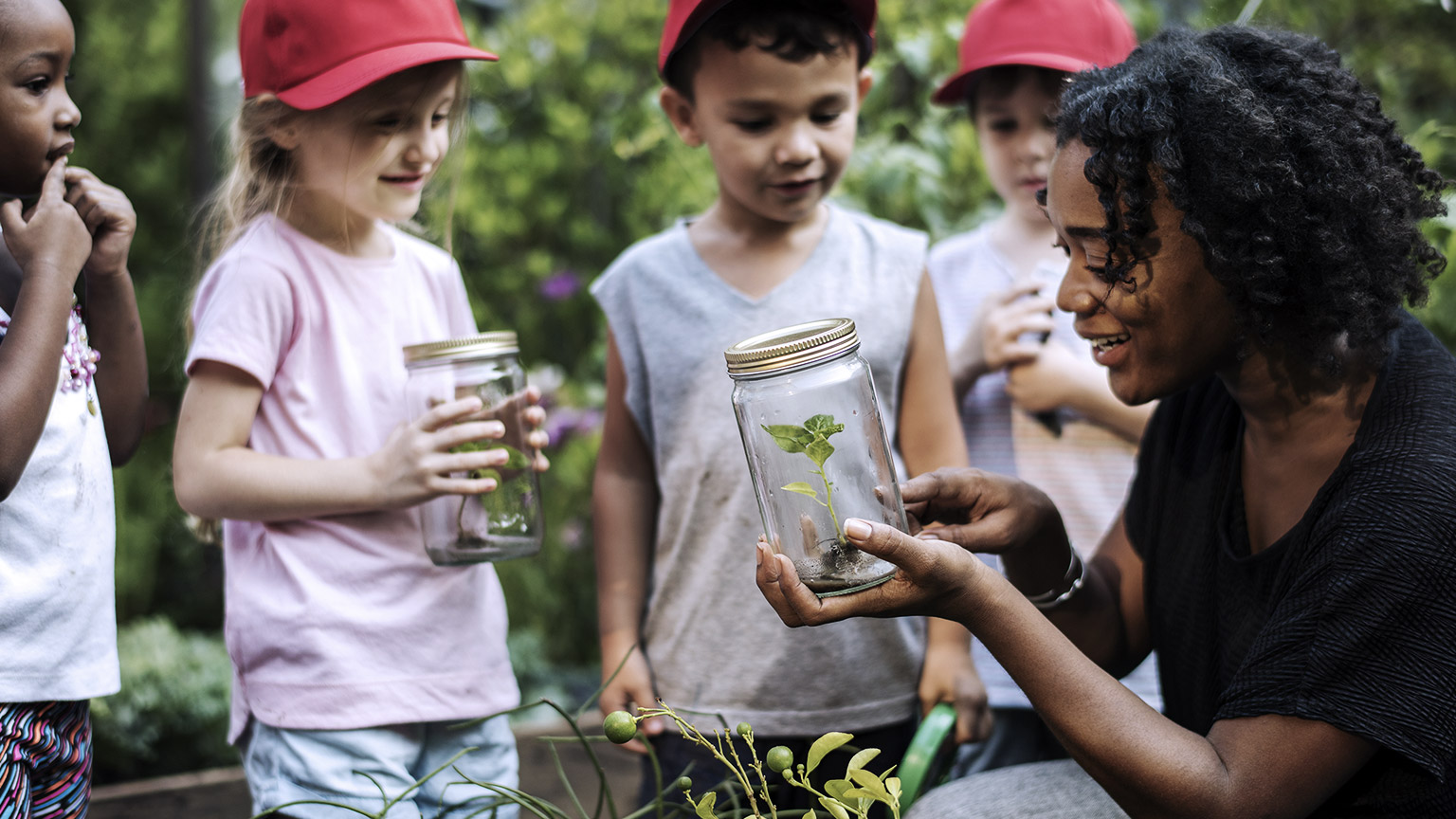This topic focuses on supporting children to develop an appreciation for the environment. Teaching and educating children to protect living things and reduce their impact on the natural environment by engaging in sustainable practices.
By the end of this topic, you will understand:
- how to support children to respect and care for the natural environment
- ways to work collaboratively with children to reduce their footprint on the natural world
- engaging children in sustainable practices
Demonstrating respect for the environment happens both inside a childcare centre and outside in the natural environment.
It is important for children to have the opportunity to learn and explore nature. It is also equally important for children to learn about why and how we can show respect to the environment. This focuses on assisting children to learn age-appropriate ways to care and protect our environment.
Demonstrating respect for the environment happens both inside a childcare centre and outside in the natural environment.
It is important to explore ways to help young children develop an awareness of how different activities impact the natural environment, how to reduce that impact and promote the use of natural and recycled materials (according to service guidelines).
Note
Learning to demonstrate respect for the natural world begins with learning to respect ourselves.
Supporting a child to demonstrate respect for the environment begins with helping them learn to respect their own body, to appreciate their unique features as beautiful, to feed their body with healthy food and to practice good hygiene. In a sense, when educators and early childhood professionals teach these things, they are already teaching children to demonstrate respect for the environment. That is, the first environment they learn about, which is their own body.

Helping children learn respect for the environment
Below are four (4) simple, everyday ways to help children develop respect for the environment around them and the ways they connect with it.
| Where does my food come from? | Where does garbage go? | Caring for our water | Where is your home? |
|---|---|---|---|
| Mealtime is an opportunity to help children learn about the growing cycle of their food. This includes the role of sun, rain, soil and the people who pick and prepare their food. | Helping young children to learn to clean up and put garbage away is one small step. It is also important to teach them how to make less garbage, recycle and reuse and be sure not to litter outside. | Water is an essential element for all life. Help children learn where the water from the tap comes from and where it goes when it drains out of the sink. Help them learn how the birds and animals use puddles and streams for water and how important water is for fish and water plants. | Help children learn to keep their home and the centre clean and safe. Help them learn about animal and insect homes and how they can be careful outside to help keep those homes safe too. |
Reducing and conserving
Children enjoy being included in daily caring practices around the service. As a service educator, you will already be implementing sustainable practices to lessen the footprint we have on the environment. It is vital that educators share their experiences with children and encourage them to collaborate with you to care for the environment.
We can break down our care practices into the following:
- Waste reduction: reuse, reduce and recycle
- Energy saving
- Water saving
We can use the following sustainable practices in collaboration with children:
| Waste reduction | Energy saving | Water saving |
|---|---|---|
|
Children can do the following:
Can you think of any more ways to include children in waste reduction? |
Children can do the following:
Can you think of any more ways to include children in energy saving? |
Children can do the following:
Can you think of any more ways to include children in water saving? |
Note
Outdoor play can also be a way to demonstrate respect for the natural environment.
Ways children can be involved in caring for plants and insects include:
Plants
Weeding, sweeping and watering
Use the outdoor area of your centre to teach children about planting, weeding and sweeping up or watering plants.
Insects
Look, do not touch
Have children go on a scavenger hunt for little insects and practice looking but not touching.
What else could you do?
Little Green Steps brings sustainability to children’s centres through curricula, staff/community workshops and retrofits of centres’ physical space.
Case study

Below is a case study paper from Little Green Steps that can be used to self-assess if your service could do more to help children develop respect for the natural environment
Use the following questions to check your knowledge.. You can check the correct answer by clicking on the 'Answer' button:
Q1. What are two (2) ways that you can support children to respect the environment?
- Meal time is an opportunity to help children learn about the growing cycle of their food - the role of sun, rain, soil and the people who pick and prepare their food.
- Helping young children to learn to clean up, put garbage away is one small step. It's also important to teach them how to make less garbage, recycle and reuse and be sure not to litter outside.
- Water is an essential element for all life. Help children learn where the water from the tap comes from and where it goes when it drains out of the sink. Help them learn how the birds and animals use puddles and streams for water and how important water is for fish and water plants.
- Help children learn to keep their home and the centre clean and safe. And help them learn about animal and insect homes and how they can be careful outside to help keep those homes safe too.
Q2. How can you assist children in reducing water usage?
- Turn taps off while washing hands
- Use half flush on toilet
- Fill drink bottle dup halfway
- Use left over water from eater play and drink bottles on the garden
- Don’t leave taps running
Q3. How can you assist children in reducing energy usage?
- Turn the lights off when not in the room
- Assist staff in hanging out or folding the washing instead of a dryer
- Regulate body temp with clothing
Q4. How can you assist children in reducing waste consumption?
- Place food scraps into a compost bin
- Fill up their water bottles
- Use recycling bins in the room
- Use both sides of their paper to draw on
- Upcycle materials from the service and home for box construction eg. Boxes, cardboard rolls, squeeze pouch lids etc.
Q5. Create a list of five (5) open-ended questions that you could ask a group of children involved in a weeding and re-planting experience.
- Can you tell me where you think weeds come from?
- What do you think a plant needs to grow?
- How do you thin we can make sure these plants stay alive?
- How can we know how high the plant is going to grow?
- How do insects use plants?

